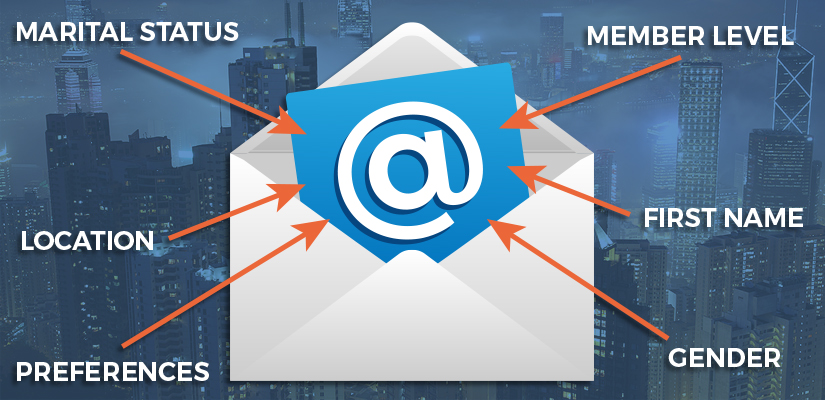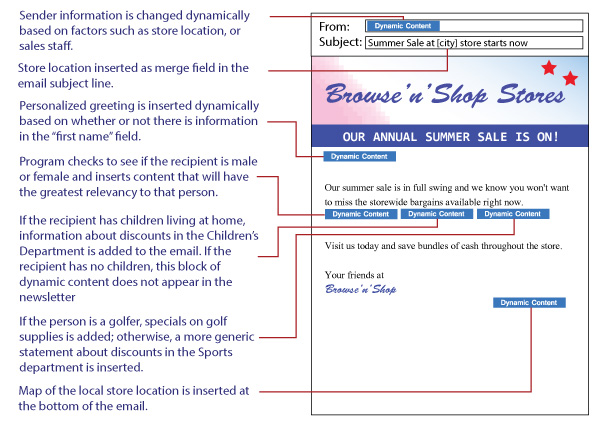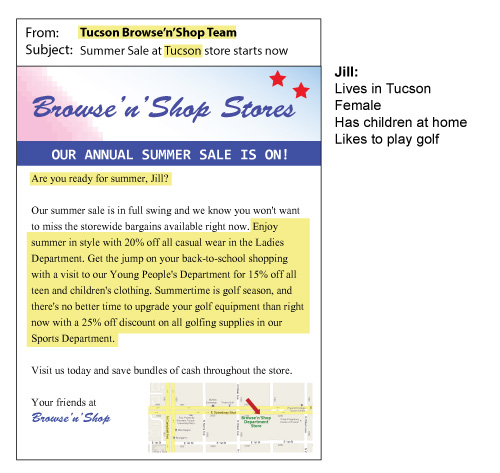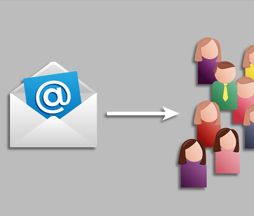DYNAMIC CONTENT

Dynamic content is a feature that lets you choose the content, subject line, or others parts of an email based on specific details for each recipient. You might want to include a panel about specific products or services based on each receipient's location, gender, or other factors. Dynamic content is the best-kept secret in email marketing. There is no more powerful tool available to the professional marketer, and yet many people are unfamilar with it. Studies have shown that the use of dynamic content in email can improve conversion rates and increase client engagement dramatically.
Goolara Symphonie hosts an unrivaled array of dynamic content features, making it possible to produce email that is unique for each recipient. While some email marketing software will let you insert specific bits of information such as a first name or a city, our software goes much further than that with the ability to add custom information throughout an email based on all the available criteria. It does this with simple, intuitive menu choices that guide you through the process. It is fast and easy to use.
How to Use Dynamic Content
Below is an example of an email containing several pieces of dynamic content as it appears in Symphonie. Clicking on any of the boxes labeled "Dynamic Content" will bring up the instructions for that block. To the left are the instructions for each piece of dynamic content. In the example, we've used dynamic content for the salutation line instead of the more common technique of using a merge tag to add a first name. In this way we avoid the problem of incomplete sentences caused by missing merge field information. If the merge tag is empty, an unpersonalized version of the salutation appears.

And here is the same email as it appears to a woman named Jill. Jill lives in Tucson, has school-aged children, and she likes to golf. All of this information is now reflected in the email. Note that the sender line is also changed to the local store's email instead of a generic corporate address.

By way of contrast, here is the same mailing as it appears to Tim. Tim lives in Denver, he has no children, and he is not a golfer. Only the opening sentence and the closing lines are the same. Everything else is specific to Tim.

No Coding Required
Unlike some systems, you never need to insert "code" into your messages to activate dynamic content. Symphonie's easy-to-use graphical interface lets you personalize the content by simply picking options from menu choices. Easily build sophisticated rules within the graphical environment based on different conditions.
Use dynamic content to personalize Subject lines, "From" and "Reply-to" addresses, HTML and plain text content, and clickthrough data for customized landing pages.
Rules are evaluated in real-time for each recipient, and are applied just before the email is sent. Conditions used to build dynamic content include:
- Demographics, such as gender or enrollment in specific programs
- Relationship demographics, such as days to a webinar or age based on a birthday
- Opens, allowing the content to change if the email was opened by this recipient
- Clickthroughs, such as altering the content if a link has been clicked
- Web site actions, like downloading a whitepaper or accessing a page
- Purchase behavior, such as purchasing a specific item or a certain dollar amount
With Symphonie's dynamic content ability, it is easy to substitute dynamic content anywhere within the message. You do not need to create special sections in your HTML, just put the dynamic content anywhere within the content - in a HTML table, div, or even in the middle of text. Some clients use it to customize the greeting for the recipient into the proper words for that language, for example.
Transactional Email Dynamic Content
Dynamic content is also available for transactional emails, workflow emails, or triggered emails. Create an email that self-assembles with details about a purchase and recommendations for other items of interest and immediately send it from your point-of-sale system using the dynamic content features.


